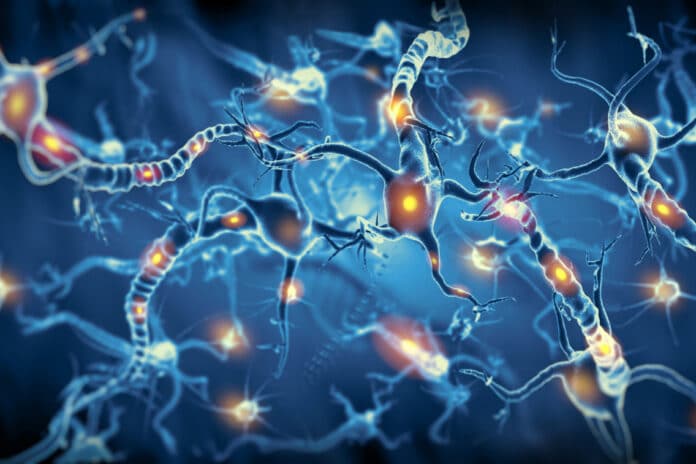Researchers at the University of Virginia have discovered how harmful tau proteins are and how they damage the essential instructions for our brain cells. This finding could lead to new treatments for Alzheimer’s disease and other neurodegenerative conditions.
The toxic protein warps the shape of nerve cell nuclei, affecting gene function and causing cells to produce more tau. This research, led by Dr. George Bloom and Dr. Xuehan Sun, is among the first to identify concrete physical harms caused by tau to neurons, providing promising leads for developing treatments for currently untreatable conditions.
Bloom, of UVA’s Departments of Biology, Cell Biology, and Neuroscience, as well as the UVA Brain Institute, the Virginia Alzheimer’s Disease Center, and UVA’s Program in Fundamental Neuroscience, said, “Other labs have done much fantastic research to learn how toxic tau spreads from neuron to neuron in the brain, but very little is known about exactly how this toxic tau damages neurons, and that question is the motivation for our new paper. The toxic tau described here is released from neurons, so if we can figure out how to intercept it when it’s floating around in the brain outside of neurons using antibodies or other drugs, it might be possible to slow or halt the progression of Alzheimer’s disease and other tauopathies.”
Tauopathies involve the accumulation of tau in the brain, seen in various conditions like Alzheimer’s, frontotemporal lobar degeneration, and others. These diseases show symptoms like dementia and movement issues. Non-Alzheimer’s tauopathies lack treatments, prompting UVA researchers to explore and understand the underlying mechanisms for potential prevention or treatment.
The team, led by Dr. Bloom, discovered that tau “oligomers,” clusters of multiple tau proteins
, significantly impact the typical shape of neuronal nuclei. These oligomers cause the seats to fold inwards, disrupting genetic material. This unnatural rearrangement can have severe consequences as the location and arrangement of genes influence their function.
Bloom said, “Our discovery that tau oligomers alter the shape of the nucleus drove us to the next step – testing the idea that the nuclear shape change causes changes in gene expression. That’s exactly what we saw for many genes, and the biggest change is that the gene for tau itself increases its expression almost three-fold. So bad tau might cause more bad tau to be made by neurons – that would be like a snowball rolling downhill.”
Tauopathies involve the accumulation of tau in the brain, seen in various conditions like Alzheimer’s, frontotemporal lobar degeneration, and others. These diseases show symptoms like dementia and movement issues. Non-Alzheimer’s tauopathies lack treatments, prompting UVA researchers to explore and understand the underlying mechanisms for potential prevention or treatment.
The team, led by Dr. Bloom, discovered that tau “oligomers,” clusters of multiple tau proteins, significantly impact the typical shape of neuronal nuclei. These oligomers cause the seats to fold inwards, disrupting genetic material. This unnatural rearrangement can have severe consequences as the location and arrangement of genes influence their function.
In conclusion, the University of Virginia’s study uncovers the harmful impact of toxic tau proteins in Alzheimer’s and related tauopathies. This finding offers hope for future treatments by identifying how these proteins damage essential brain cell instructions. The discovery is a crucial step toward understanding and addressing currently untreatable neurodegenerative conditions.
Journal reference:
- Xuehan Sun, Guillermo Eastman, et al., Structural and functional damage to neuronal nuclei caused by extracellular tau oligomers. Alzheimer’s & Dementia. DOI: 10.1002/alz.13535.
